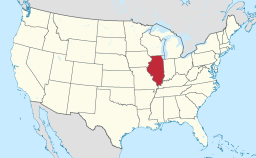Inverness, Illinois
| Inverness, Illinois | |
| Village of Inverness, Illinois | |
| Village | |
| Motto: "The village with a heritage" | |
| Country | United States |
|---|---|
| State | Illinois |
| County | Cook |
| Coordinates | 42°6′47″N 88°5′54″W / 42.11306°N 88.09833°WCoordinates: 42°6′47″N 88°5′54″W / 42.11306°N 88.09833°W |
| Area | 6.70 sq mi (17 km2) |
| - land | 6.54 sq mi (17 km2) |
| - water | 0.16 sq mi (0 km2) |
| Population | 7,399 (2010) |
| Density | 1,131.3/sq mi (437/km2) |
| Timezone | CST (UTC-6) |
| - summer (DST) | CDT (UTC-5) |
| Postal code | 60067, 60010 |
| Area code | 847 |
|
Location in Cook County and the state of Illinois.
|
|
|
Location of Illinois in the United States
|
|
|
Website: www |
|
Inverness is a suburban village in Cook County, Illinois, United States. The population was 7,399 at the 2010 census.
Inverness is located at 42°6′47″N 88°5′54″W / 42.11306°N 88.09833°W (42.113275, -88.098433).
According to the 2010 census, Inverness has a total area of 6.703 square miles (17.36 km2), of which 6.54 square miles (16.94 km2) (or 97.57%) is land and 0.163 square miles (0.42 km2) (or 2.43%) is water.
The village borders are defined by Barrington Road to the west, Roselle Road to the east, Algonquin Road to the south, and Dundee Road to the north.
The Inverness area was first settled in 1836 by George Ela and became known as Deer Grove. After surveying the township area, in 1840 the US government offered land in the area for $1.25 per acre. By 1854, rail service was established to Deer Grove, and in 1859 the line was incorporated into the Chicago and North Western Railway system. The Inverness area was now easily accessible to Chicago. The frontier had been opened.
In 1926, Mr. Arthur T. McIntosh, one of Chicago's leading land developers, bought the Temple farm and house, which was originally built by Ralph Atkinson. It was the first of eleven parcels to be acquired by him. These lands, combined with the acquisition of the Cudahy Company Golf Course, comprised 1,500 contiguous acres (6,100,000 m2) for development. With the area under McIntosh's control, it became known as Inverness, after the McIntosh clan home in Scotland.
An important person during this early development was Way Thompson, who preserved the natural beauty of the area by laying out the road system to take advantage of the rolling land and by subdividing lots to conform to natural contours. A minimum lot size of 1-acre (4,000 m2) was established. Thompson also approved all house plans and where they were located on the lots. The first ten homes were even decorated by his wife, Barbara. The first new homes were occupied by 1939. These homes were mostly situated around the edge of the Inverness Golf Club and were designed to be affordable to young couples. They were priced from $9,500 to $20,000. McIntosh built the first 20 homes. After that, the homes were custom built for individuals who purchased lots from McIntosh.
...
Wikipedia


